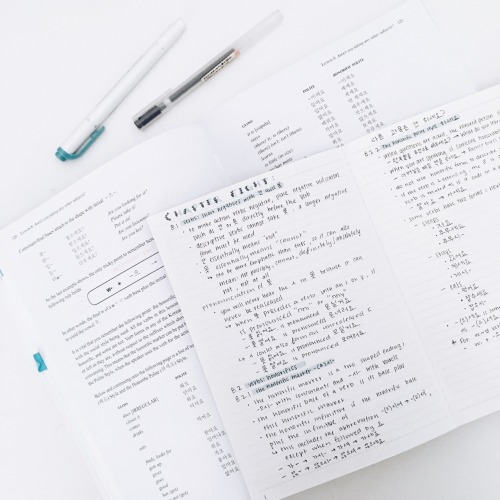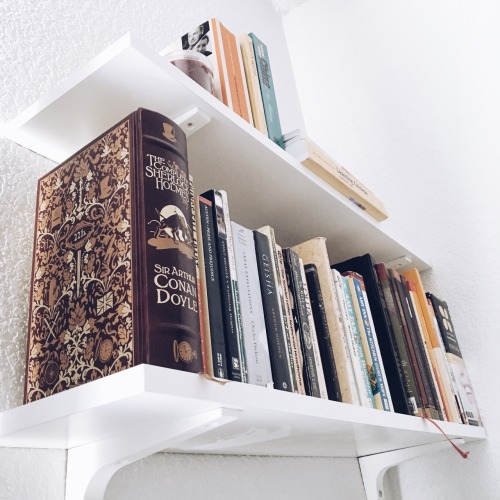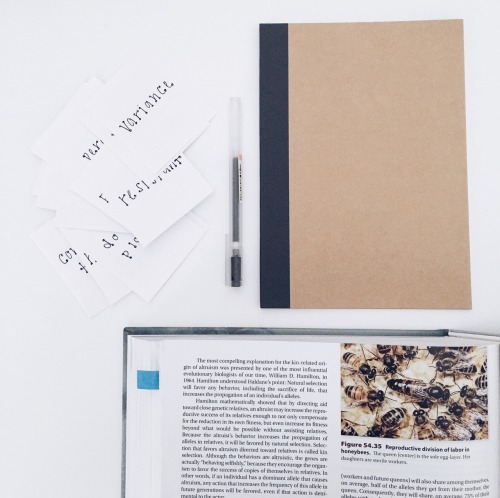OH MY GOD I DID EVERYTHING IN MY IMMEDIATE TO-DO LIST WITHOUT PROCRASTINATING AFTER CLASS!!??!! WHATEVER
OH MY GOD I DID EVERYTHING IN MY IMMEDIATE TO-DO LIST WITHOUT PROCRASTINATING AFTER CLASS!!??!! WHATEVER IT IS YOU GOTTA DO TODAY I HOPE THAT YOU DO IT AND FEEL HAPPY WITH WHATEVER YOUR ACHIEVEMENT IS TODAY LOVE YOU ALL BYEEEEEE!!!

More Posts from Littlelanguagefox and Others
The Last - Agust D
주소 - Address
화장실 - Bathroom, Washroom
갈등 - Conflict
일상 - Daily life, Everyday life
우울증 - Depression
꿈 - Dream
친구 - Friend
욕심 - Greed
기요틴 - Guillotine
머리 - Head
주저 - Hesitation
아이돌 - Idol
상상 - Imagination
인생 - Life
기억 - Memory
정신 - Mentality, Mind
괴물 - Monster
강박 - OCD
자신 - Oneself
부모님 - Parents
오염 - Pollution
자존심 - Pride, Self-respect
정신과 - Psychiatry clinic
랩퍼 - Rapper
현실 - Reality
롤렉스 - Rolex
근원 - Root, Cause
잠 - Sleep
가끔 - Sometimes
성공 - Success
시간 - Time
도쿄돔 - Tokyo Dome
누구 - Who
걱정 - Worry
청춘 - Youth
don’t study because you need or have to.
study because knowledge is power.
study because they can never take it away from you.
study because you want to know more.
study because it enhances you.
study because it grows you.
How to Make a Language Notebook
I’ve been using a language notebook for about a month now, and I finally figured out a format that works for me, so I figured I’d share it with you guys! Keep in mind these are only recommendations, feel free to do your own thing if you think it’ll be more convenient for you!
Okay, so to start, here’s what you’ll need:
1) Pens
I recommend three pens of different colours. I used blue, orange and black. The blue is for words/ sentences in my target language. I chose a dark colour so they would stand out more. The orange, a light colour, is for words/ sentences in my native language (or English, in my case). It’s a lighter colour because it makes the blue stand out more, so I focus more on the words in my target language instead of the English ones. The black is for titles, drawings, and words in another language that isn’t my target or my native. For example, I compare German with Spanish in this entry:

As you can see, the German phrases are in blue because it’s my target language. The explanations in English are in orange, and the title and Spanish words are in black.
2) A notebook
Some people recommend separating grammar and vocabulary. This is an excellent idea if you have many notebooks or notebooks with different sections. If you don’t, it’s not a problem. I only use one notebook, which works for me, because I don’t use it too much (it’s mostly a space to write down stuff I like, not stuff I will necessarily use). If you plan on using your notebook in a more serious manner, but cannot afford to get several notebooks, I recommend you write everything concerning vocabulary (or grammar) in the front of the notebook, and the rest (grammar or vocabulary, it depends) at the back. Make sure to not use a very thin notebook though!
If you don’t feel the need to separate grammar and vocabulary, there are ways of dividing the topics:
3) Sticky Tabs
I have four different topics in my language notebook: vocabulary, grammar, verbs, and miscellaneous. To divide them, I add sticky tabs of different colours next to each entry. For example, vocabulary is pink, grammar is blue, verbs are orange, and miscellaneous is green.

This allows me to see what the topic is immediately, and it makes my notebook very colourful!
4) 4cm margin
It doesn’t exactly have to be 4 centimeters, but it shouldn’t be more than a third of the page. This margin (I place mine on the right of the page) is for any notes you might want to add about the entry. For example, definitions, formal/ informal forms, etc. It doesn’t necessarily have to be used for every entry, but it’s easier to trace it for all, instead of just adding it when you need it. It’s also a good place to put the sticky tabs (refer to the previous image). I trace the line with a pencil so that it’s lighter and more discreet than the rest of the writing, but that’s up to you.
5) Index/ Key
One last thing you’ll (maybe) need: an index/ key! I don’t personally have an index, because I have too many entries per page, but a key is definitely useful if you use the sticky tab method. I still haven’t gotten around to making one, but that’s because I’m lazy Just write it (or stick it) on the back of the cover so you don’t waste a page on it.
Next you’ll need to decide what to write in the notebook. If you already know what to write, great! If not, here are some suggestions:
- Class notes
- Grammar rules/ verb conjugations/ etc. that you struggle with
- Funny sayings or random slang you learn
- Tumblr posts (these are great because they are generally explained simply, but make sure to check the info, because there might be some small mistakes)
- Journal entries (these are a great way to practice what you’ve written in previous entries!)
It doesn’t all have to be useful, necessarily. I have jokes, and puns that I might never use, but that are funny anyways. I find it’s a great way to stay motivated!
If you want more photos from my notebook, you can find ‘em here :)
So yeah, that’s all! :D I hope you guys like it, and feel free to ask me questions about my language notebook!




|| 161018 ||
My new shelves + bio, stats, and Korean homework!
my korean apps
hello everyone :) in this post I want to share which apps I use to study korean on the go. I actually had around two dozen apps related to korean on my phone, but no person could use all of them together, so I limited it down to only 12 apps
of course, some of those I haven't used in ages, but I do think they're useful from time to time


LingoDeer
I cannot stop raving about this app, their courses are so well thought through, they teach grammar well and the sample sentences are actually useful!
Memrise
there's nothing new about memrise, I use it because it has all 10 ttmik levels on there, with audio recordings and grammar explanations. @ whoever created that memrise course, I'll love you forever
NAVER dictionary
it's not just a dictionary, it has the papago translator integrated, there are podcasts, each day there's a "word of the day" and "global sentences" where you can learn not only a new sentence, but also view entire sample conversations
KORLINK
it's an app that compiles all ttmik pdf lessons
Beelinguapp
this app has many well known (short) stories and even fairytales which you can read in your native and target language side by side. if you want you can listen to the audio recordings as well, and even slow them down if you need
Grammar Haja
okay this app is amazing, it has nearly all grammar of the korean language, gives in-depth explanations and sample sentences. there's even a "confusing grammar" section where the difference between, well, confusing grammar points is explained
Hanji
you can type in a english or korean verb in any conjugation and it will not only give you the translation (they aren't always on point tho7), but also all the possible conjugations for the verb. it includes all tenses, politeness levels and all possible suffixes
HiNative
HiNative allows you to ask questions about a country or a language to natives. you can phrase any question or use the options provided, such as 'does this sound natural', 'what's the difference between x and x' etc. you can even record your pronunciation or ask natives to send you a audio recording
HelloTalk
this app is mostly about language exchange, so making friends with natives or finding a studdy buddy. you can also post pictures and texts or read others public entries as reading / writing practice. if you want to meet up with someone you can enter your location and see who's near, but beware of the creeps that are on this app and stay safe
세종한국어 apps
these apps are provided by the king sejong institute foundation. there are different apps for different levels, but I downloaded the 회화 초급 and 문법 초급 (conversation and grammar for beginners) as well as the beginner to intermediate vocabulary app. I haven't really taken the time to go through the first two apps to check if there are basics that I still don't know by now, but I'm planning to check that once I have the time. so far I think these apps would be a really good way for beginners to ease into the language and learn the basics. they also provide mini games where you can test your knowledge

that's it for now, I hope you enjoyed this little 'tour' of my korean apps. if you have any questions, feel free to leave a message in my ask :)
have a lovely day everyone 🌸🌺
how can i help?
here you can find donation links, petitions, how to educate yourself, etc.
if you can afford to donate: official george floyd memorial fund here minnesota freedom fund here stephen lawrence charitable trust here the NAACP legal defense fund here black lives matter here
petitions you can sign: justice for george floyd here, here & here get the officers charged here reclaim the block — minneapolis here justice for breonna taylor here, here & here justice for ahmaud arbery here, here & here pass the georgia hate crime bill here **if you are international and aren’t able to sign, here are some zip codes to use: 90015 — los angeles, california 10001 — new york city, new york 75001 — dallas, texas
text or call: text “JUSTICE” 688366 text “FLOYD” to 55156
get in contact with the district attorney and minneapolis mayor. leave a message demanding that 4 officers including derek chauvin (badge #1087) and tou thao (badge #7162) be arrested for the murder of george floyd. minneapolis mayor’s office, jacob frey: (612) 673-2100 minneapolis district attorney, mike freeman: (612) 348-5550 OR citizeninfo@hennepin.us minneapolis PD emails: police@minneapolismn.gov minneapolis311@minneapolismn.gov policereview@minneapolismn.gov you can find the email template here
breonna taylor was murdered in her sleep by policemen (jonathan mattingly, brett hankison and myles cosgrove) who raided the wrong house and shot her 8 times. call the louisville mayor’s office and police department to demand that the police be fired and charged. louisville mayor’s office, greg fischer: (502) 574-2003 louisville metro police department: (502) 574-7111
undercover cop, jacob pedersen of the st. paul PD was seen smashing windows as the catalyst to many of the riots that occurred in minneapolis. email the st. paul PD and report his actions. st. paul PD email: policeinfo@ci.stpaul.mn.us proof of smashing windows here proof it was pedersen here
want to learn more? i strongly recommend the book “Why I’m No Longer Talking to White People About Race” by reni eddo-lodge. you can find an extract here.
list of resources: black lives matter google doc here black lives matter carrd here elle osili-wood on twitter here
Don’t worry. Start now. Get up, take a few deep breaths, stretch, count to ten with your eyes closed. Then take out your books and a notebook and a pen. Get on with it. Start reading, annotating, take down your notes. If you feel your focus faltering, sit back, take a few deep breaths, walk around a bit, get back to your books. It’s never too late.
The Superlinguo Linguist Job Interviews master list
This is the fourth year I’ve been running the Linguist Jobs Interview series. There are now over 40 interviews to date, with people who studied linguistics - be it a single undergraduate subject or a full PhD - and then gone on to careers outside of academia.
Although I ask the same questions each time, I get very different answers. For some people, linguistics is directly applicable to their daily work, while others find that the general skills they learnt can transfer to other careers.
I update this list at least once a year. For newer interviews, you can browse the Linguistics Jobs tag on the blog!
The full list of Linguistics Job Interviews (to April 2019):
Interview with a Lexicographer
Interview with a School Linguist
Interview with a Journalist
Interview with a PR Consultant
Interview with an Agency Owner & Executive Editor
Interview with a Freelance Editor, Writer and Trainer
Interview with a Language Creator
Interview with a Translator and Business Owner
Interview with a Standards Engineer
Interview with a Conductor
Interview with an Accent Coach
Interview with two Communications Professionals
Interview with a University Course Coordinator
Interview with a Think Tank Researcher
Interview with a Museum Curator
Interview with a Communications Consultant
Interview with a Linguistic Project Manager at a Language Tech Company
Interview with a Data Scientist
Interview with a Librarian
Interview with a Text Analyst
Interview with a User Experience (UX) Researcher
Interview with a Study Abroad Facilitator
Interview with The Career Linguist
Interview with a local radio Digital Managing Editor
Interview with a Senior Content Project Manager at Transparent Language
Interview with a Freelance Translator and Editor
Interview with an Apprentice Mechanic
Interview with an Educational Development Lecturer (and Linguistic Consultant)
Interview with a Client Services Manager
Interview with an English Foreign Language Teacher
Interview with a Speech Pathologist
Interview with a Computational Linguist
Interview with a Tour Company Director
Interview with a Copywriter and Brand Strategist (and Fiction Author)
Interview with a Language Revitalisation Program Director
Interview with a Media Language Researcher
Interview with an Editor and Copywriter
Interview with a Humanitarian Aid Worker
Interview with a High School Teacher
Interview with an Interpreter
Interview with a Journalist
Interview with a Data Analyst

-
 weeping-mistytree liked this · 6 years ago
weeping-mistytree liked this · 6 years ago -
 marizjenne liked this · 6 years ago
marizjenne liked this · 6 years ago -
 i-doled liked this · 6 years ago
i-doled liked this · 6 years ago -
 cheren liked this · 6 years ago
cheren liked this · 6 years ago -
 cvtiedeaan reblogged this · 6 years ago
cvtiedeaan reblogged this · 6 years ago -
 etherealjjong reblogged this · 6 years ago
etherealjjong reblogged this · 6 years ago -
 etherealjjong liked this · 6 years ago
etherealjjong liked this · 6 years ago -
 zlalipop reblogged this · 6 years ago
zlalipop reblogged this · 6 years ago -
 zlalipop liked this · 6 years ago
zlalipop liked this · 6 years ago -
 eyes0ny0u liked this · 6 years ago
eyes0ny0u liked this · 6 years ago -
 perigelion liked this · 6 years ago
perigelion liked this · 6 years ago -
 langblrderachael liked this · 6 years ago
langblrderachael liked this · 6 years ago -
 coffeshops-and-notes liked this · 6 years ago
coffeshops-and-notes liked this · 6 years ago -
 littlelanguagefox reblogged this · 6 years ago
littlelanguagefox reblogged this · 6 years ago

